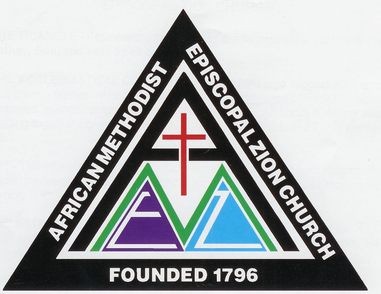Our MissionThe mission of the African Methodist Episcopal Zion Church is to increase our love for God and to help meet the needs of humankind by “Loving God with all our heart, with all our soul, and with all our mind, and to love our neighbor as ourselves.”
Implicit in this statement is the belief that the church should have a positive relationship to God vertically, and a positive relationship to humankind horizontally. Therefore, we love God and are obedient to His commandments and loyal to all for which He and His Kingdom stand. We also share in the mission of His Son Jesus Christ, in “healing the sick, helping the blind to receive sight, the lame to walk, the leper to be cleansed, the deaf to hear, the dead to be raised, and the poor to have the Good News preached to them.” - Luke 4:18 We actualize this mission by praising God, by being obedient to the demands of the Gospel, by telling the story of God’s gracious acts in creating and redeeming the world, by inviting persons to commit their lives to Jesus Christ, and by serving as ministers of God’s liberating and reconciling grace. |
Our History |
The African Methodist Episcopal Zion (Zion was officially added to the name in 1848) Church was founded in New York City in October 1796, when James Varick and about 30 other African-American Methodists withdrew from John Street Methodist Episcopal Church and formed their own congregation. At this point, the African-American congregation was still related to the Methodist Episcopal Church. Its organization was a direct result of the dissatisfaction of African-American Methodists over the treatment they were receiving in the Methodist Episcopal Church.
As a result, “the fathers [of the AME Zion Church] agreed that they had no fault to find with doctrines, form of government, and evangelistic and soul-saving emphases of Methodism, but they could not endure the constant humiliation and restriction imposed by the people into whose hands Methodism had fallen. The founders were opposed to slavery and inhumane treatment of slaves, so that they could logically remain Methodists because of the spirit of the originators and the meaning of the first-born movement in England and America.”** By 1820, the AME Zion Church was ready to break its organizational ties to the Methodist Episcopal Church, which still refused to ordain African-American elders. The AME Zion Church was known from the beginning as an anti-slavery church, in part because of its strong itineration of preachers for abolition. Harriet Tubman, Sojourner Truth, Katherine Harris, and Frederick Douglass are some of its well-known members. It should be noted that while the A.M.E. Zion Church was taking form in New York City, a similar movement was going on in Philadelphia, PA at about the same time. Under the leadership of Richard Allen, African members of the St. George’s Methodist Episcopal Church broke away and formed what is known today as the African Methodist Episcopal (A.M.E.) Church. Although the A.M.E. and A.M.E. Zion Church shared the same name for a period of time, they were always separate movements. They both serve as a testimony of the greater things God had in store for a people that was being deprived of all the blessings He had in store for them. **Walls, William J. The African Methodist Episcopal Zion Church: Reality of the Black Church, (Charlotte, N.C.: AME Zion Publishing House, 1974), p. 45. |

